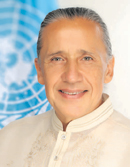THE challenge of preventing unlawful killings is global. We just need to look at the most recent news in the media to understand its dimensions and social impact. I have in mind the killing in 2017 of 17-year-old Kian Loyd de los Santos at the hands of police. In this case, investigations resulted in the conviction of the responsible police officers. But in most cases, there is no CCTV footage, basic elements of investigations are lacking, and families of victims are left without the truth of what happened to their loved ones while perpetrators walk free and are not held accountable.
Last week, from July 3 to 7, the government of the Philippines, together with the United Nations under the UN Joint Program for Human Rights, took a significant step to help address this. In partnership with global and Philippine experts, 26 participants, including representatives of government agencies, senior-level prosecutors, security forces, the Commission on Human Rights (CHR) and civil society came together in a weeklong intensive training to discuss how to implement the so-called Minnesota Protocol on the investigation of potentially unlawful deaths (2016) in the country. Internationally, the Minnesota Protocol is considered the gold standard in such investigations. It sets out the relevant legal framework and elaborates on the conduct of an investigation, including the investigation process, witness interviews and protection, recovery of human remains, identification of dead bodies, types of evidence and sampling, autopsies, and the analysis of human remains, as well as several guidelines, annexes and pictorial charts including anatomical sketches.
Continue reading with one of these options:
Ad-free access
P 80 per month
(billed annually at P 960)
- Unlimited ad-free access to website articles
- Limited offer: Subscribe today and get digital edition access for free (accessible with up to 3 devices)


